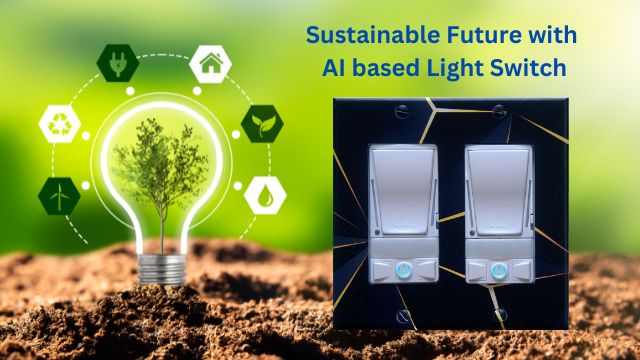
Nuro Technologies
Let’s plunge into the world which brings you close to the future.
Technology is a fundamental part of our daily lives, powering our homes, workplaces, and industries. As the world shifts towards a more sustainable future, it becomes crucial to explore innovative solutions that reduce energy consumption and promote environmental conservation. In this blog post, we will delve into the role of AI-based technology in transforming light switches, enabling a sustainable and energy-efficient future.

Traditional light switches serve the basic purpose of controlling the flow of electricity to various appliances and lighting fixtures. However, by incorporating AI-based technology, these switches can become intelligent energy management systems. AI algorithms can analyze real-time data on energy consumption, occupancy patterns, and user preferences to optimize electricity usage in a building or a household. For example, by integrating occupancy sensors with AI, switches can automatically turn off lights and appliances when rooms are unoccupied, reducing unnecessary energy waste. This intelligent energy management not only lowers electricity bills but also contributes to a greener environment by reducing overall energy demand.
Lighting accounts for a significant portion of electricity consumption in residential and commercial spaces. AI-powered light switches can introduce adaptive lighting control systems that respond to natural lighting conditions and user requirements. By integrating sensors that measure ambient light levels and occupancy, switches can automatically adjust the brightness of lights accordingly. This not only enhances user comfort but also optimizes energy usage by ensuring that lights are only at the necessary levels. Additionally, AI algorithms can learn from user preferences and behaviour to customize lighting settings, providing personalized experiences while conserving energy.
Demand response programs aim to balance electricity supply and demand by adjusting consumption during peak hours. AI-based light switches can seamlessly integrate with these programs, enabling buildings and homes to participate actively. By analyzing real-time data on electricity pricing, demand patterns, and grid conditions, switches can automatically adjust energy usage based on pre-set preferences or AI recommendations. This dynamic response allows users to reduce electricity consumption during peak periods when demand is high and electricity prices are costly. By participating in demand response programs, users contribute to grid stability, reduce the need for additional power generation, and promote sustainable energy practices.
AI-based light switches can provide users with valuable insights into their energy consumption patterns and help them make informed decisions about energy usage. By collecting and analyzing data on energy consumption, these switches can generate personalized energy reports, highlighting areas where energy efficiency improvements can be made. Users can receive recommendations on optimizing their energy usage, such as identifying energy-intensive appliances or suggesting energy-efficient alternatives. This feedback loop empowers individuals to actively participate in energy conservation efforts and make sustainable choices in their daily lives.
Integration with Smart Grid Infrastructure:
The deployment of smart grid infrastructure is a crucial step towards a sustainable energy ecosystem. AI-powered electric switches can seamlessly integrate with smart grid systems, enabling bidirectional communication between energy providers and consumers. This integration allows switches to receive real-time information on electricity pricing, grid conditions, and renewable energy availability. By leveraging this data, switches can optimize energy usage, prioritizing renewable energy sources and reducing reliance on fossil fuel-based electricity generation. This integration also opens the door to future innovations, such as dynamic pricing models and peer-to-peer energy trading, fostering a more decentralized and sustainable energy landscape.
The transformation of light switches through AI-based technology holds immense potential in driving sustainable practices. From intelligent energy management and adaptive lighting control to demand response integration and personalized energy analytics, these AI-powered switches enable users to optimize energy usage, reduce wastage, and contribute to a greener future. Furthermore, their integration with smart grid infrastructure promotes a more efficient and sustainable energy ecosystem.